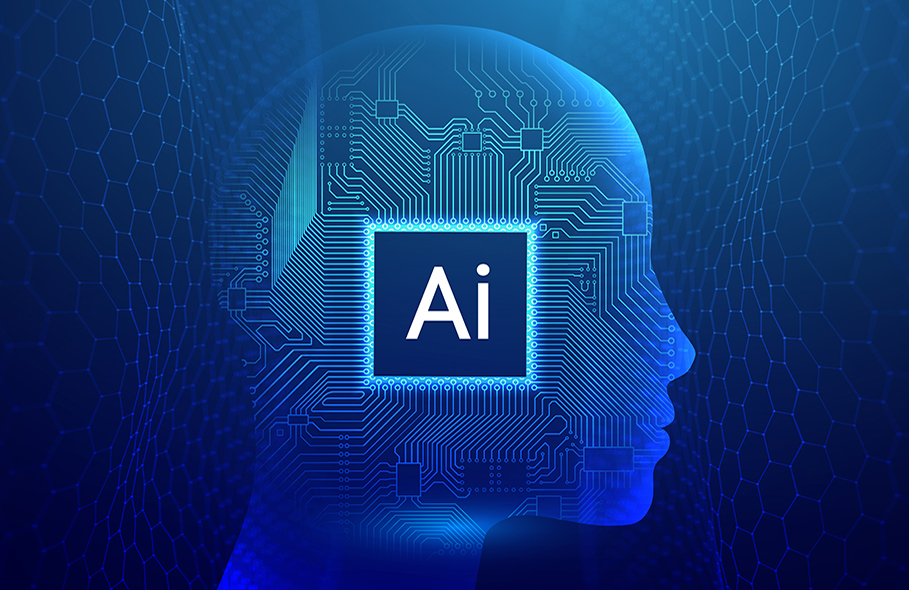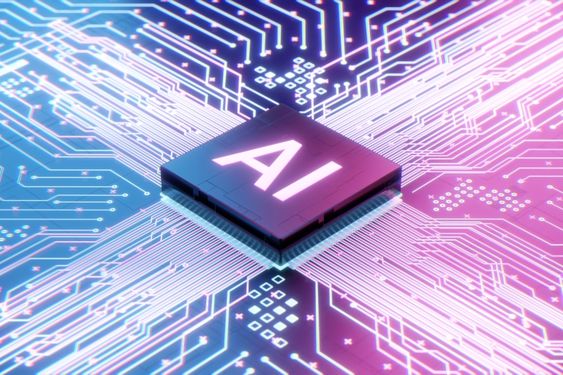What exactly is AI (artificial intelligence)?
The process of simulating human intelligence by means of machines, particularly computer systems is known as artificial intelligence. Explicit utilizations of simulated intelligence incorporate master frameworks, normal language handling, discourse acknowledgment and machine vision.
How does AI function?
Vendors have been rushing to promote how their products and services make use of AI as the hype surrounding it has grown. Frequently, what they allude to as simulated intelligence is just a part of the innovation, for example, AI. Computer based intelligence requires an underpinning of specific equipment and programming for composing and preparing AI calculations. There is no one programming language that is synonymous with AI; however, Julia, Python, R, Java, and C++ all have features that are well-liked by AI developers.
In most cases, AI systems work by taking in a lot of labeled training data, looking for patterns and correlations in the data, and then using these patterns to predict future states. An image recognition tool can learn to identify and describe objects in images by reviewing millions of examples, or a chatbot can learn to generate lifelike exchanges with people by being fed examples of text. New, quickly further developing generative artificial intelligence procedures can make sensible text, pictures, music and different media.
Computer based intelligence programming centers around mental abilities that incorporate the accompanying:
Learning. The acquisition of data and the development of rules to transform it into useful information are the primary focuses of this section of AI programming. Algorithms are the rules that give computing devices step-by-step instructions on how to complete a particular task.
Reasoning. The selection of the appropriate algorithm to achieve a desired result is the focus of this aspect of AI programming.
Self-correction. The purpose of this part of AI programming is to constantly improve algorithms so that they produce the most accurate results possible.
Creativity. Neural networks, rules-based systems, statistical methods, and other AI techniques are used in this part of AI to come up with new ideas, images, text, and music.
Contrasts between artificial intelligence, AI and profound learning:-
Artificial intelligence, AI and profound learning are normal terms in big business IT and at times utilized reciprocally, particularly by organizations in their advertising materials. However, there are differences. The term simulated intelligence, begat during the 1950s, alludes to the recreation of human knowledge by machines. It encompasses a constantly evolving set of capabilities as new technologies emerge. Deep learning and machine learning are among the AI-related technologies.
Software applications can become more accurate at predicting outcomes without being explicitly programmed to do so thanks to machine learning. AI calculations utilize verifiable information as contribution to anticipate new result values. This approach turned out to be unfathomably more viable with the ascent of enormous informational collections to prepare on. Profound learning, a subset of AI, depends on how we might interpret how the mind is organized. Recent advancements in artificial intelligence, such as self-driving cars and ChatGPT, are based on deep learning’s use of artificial neural network structure.
What’s the significance of artificial intelligence?
Man-made intelligence is significant for its capability to change how we live, work and play. It has been successfully utilized in business to robotize assignments done by people, including client assistance work, lead age, extortion identification and quality control. In various regions, computer based intelligence can perform errands obviously superior to people. AI tools frequently complete jobs quickly and with relatively few errors, particularly when it comes to repetitive, detail-oriented tasks like analyzing a large number of legal documents to ensure that relevant fields are filled in correctly. Due to the gigantic informational indexes it can process, man-made intelligence can likewise give undertakings bits of knowledge into their activities they probably won’t have known about. The quickly growing populace of generative man-made intelligence devices will be significant in fields going from training and advertising to item plan.
In point of fact, advancements in artificial intelligence (AI) techniques have not only contributed to the explosion of efficiency but also opened up completely new business opportunities for some larger businesses. Before the ongoing flood of simulated intelligence, it would have been difficult to envision utilizing PC programming to interface riders to taxis, however Uber has turned into a Fortune 500 organization by doing exactly that.
AI technologies are utilized to improve operations and outpace competitors in many of today’s largest and most successful businesses, such as Alphabet, Apple, Microsoft, and Meta. At Letters in order auxiliary Google, for instance, artificial intelligence is key to its web crawler, Waymo’s self-driving vehicles and Google Mind, which created the transformer brain network design that supports the new leap forwards in normal language handling.
What are the benefits and weaknesses of man-made consciousness?
Fake brain organizations and profound learning artificial intelligence advancements are rapidly developing, essentially in light of the fact that computer based intelligence can handle a lot of information a lot quicker and make expectations more precisely than humanly conceivable.
While the gigantic volume of information made consistently would cover a human scientist, man-made intelligence applications utilizing AI can take that information and immediately transform it into significant data. As of this writing, one of the main drawbacks of AI is the high cost of processing the large amounts of data required by AI programming. Organizations must also be aware of AI’s potential to create biased and discriminatory systems, either intentionally or unintentionally, as more products and services incorporate AI techniques.
Benefits of simulated intelligence
Coming up next are a few benefits of simulated intelligence.
good at jobs that require attention to detail. In the diagnosis of certain cancers, such as breast cancer and melanoma, AI has demonstrated that it is as good as or even better than doctors.
less time spent on data-intensive tasks. In industries with a lot of data, like banking and securities, pharmaceuticals, and insurance, AI is used a lot to speed up the process of analyzing large data sets. Monetary administrations, for instance, regularly use computer based intelligence to handle credit applications and recognize extortion.
Saves work and increments efficiency. The use of warehouse automation, for instance, grew during the pandemic and is anticipated to expand as AI and machine learning are incorporated.
produces consistent outcomes. The best simulated intelligence interpretation apparatuses convey elevated degrees of consistency, offering even private ventures the capacity to arrive at clients in their local language.
Can further develop consumer loyalty through personalization. Content, messaging, advertisements, recommendations, and websites can be tailored to each individual customer by AI.
Virtual agents powered by AI are always available. AI programs provide service 24 hours a day, 7 days a week.
AI’s drawbacks The following are some of AI’s drawbacks.
Expensive.
Requires profound specialized skill.
Lack of skilled workers to construct AI tools.
scales reflect the biases of its training data.
inability to apply generalizations to multiple tasks.
Dispenses with human positions, expanding joblessness rates.
AI: strong versus weak AI AI can be weak or strong.
The design and training of weak AI, also known as narrow AI, is focused on completing a specific task. AI is weak in industrial robots and virtual personal assistants like Siri from Apple.
Programming that is capable of imitating human cognitive abilities is referred to as strong AI, also known as artificial general intelligence (AGI). When given a new undertaking, areas of strength for a framework can utilize fluffy rationale to apply information starting with one space then onto the next and find an answer independently. A strong AI program should theoretically be able to pass both the Chinese Room argument and the Turing test.
Which four kinds of artificial intelligence are there?
Arend Hintze, an associate teacher of integrative science and software engineering and designing at Michigan State College, made sense of that man-made intelligence can be classified into four kinds, starting with the undertaking explicit smart frameworks in wide use today and advancing to aware frameworks, which don’t yet exist. The following are the categories:
Type 1: Responsive machines. These AI systems are task-specific and lack memory. Deep Blue, an IBM chess program that defeated Garry Kasparov in the 1990s, serves as an illustration. Although Deep Blue is able to make predictions and identify chessboard pieces, it does not have a memory, so it cannot draw lessons from previous events.
Type 2: memory deficits Because these AI systems have memories, they can learn from their past actions and make better decisions in the future. This is the way some of the decision-making functions in self-driving cars are built.
Type 3: The mind’s theory. Hypothesis of brain is a brain research term. When applied to simulated intelligence, it implies the framework would have the social insight to figure out feelings. This sort of simulated intelligence will actually want to gather human expectations and foresee conduct, an essential expertise for man-made intelligence frameworks to become necessary individuals from human groups.
Type 4: Self-awareness. AI systems fall under this category and are conscious because they have a sense of self. Machines with mindfulness grasp their own present status. There is no such thing as this sort of simulated intelligence.
What are instances of computer based intelligence innovation and how could it be utilized today?
Simulated intelligence is integrated into a wide range of sorts of innovation. The following are seven models.
Automation. Automation tools have the potential to broaden the variety and volume of tasks performed when paired with AI technologies. RPA, a type of software that automates repetitive, rules-based data processing tasks previously performed by humans, is one example. When joined with AI and arising man-made intelligence devices, RPA can computerize greater bits of big business occupations, empowering RPA’s strategic bots to pass along knowledge from man-made intelligence and answer process changes.
Learning by machine This is the study of getting a PC to act without programming. Profound learning is a subset of AI that, in extremely straightforward terms, can be considered the robotization of prescient examination. There are three kinds of AI calculations:
Managed learning. In order to identify patterns and use them to label new data sets, data sets are labeled.
Learning without supervision Informational collections aren’t named and are arranged by likenesses or contrasts.
Learning with reinforcement. Informational indexes aren’t named however, in the wake of playing out an activity or a few activities, the computer based intelligence framework is given criticism.
Image processing. A machine can see thanks to this technology. Machine vision catches and examines visual data utilizing a camera, simple to-computerized change and advanced signal handling. Machine vision is frequently compared to human vision, but it is not restricted by biology and can be programmed to see through walls, for instance. It is utilized in a scope of uses from signature distinguishing proof to clinical picture examination. PC vision, which is centered around machine-based picture handling, is frequently conflated with machine vision.
Processing of natural language (NLP) This is the handling of human language by a PC program. Spam detection, which determines whether an email is junk by examining the subject line and body, is one of the oldest and most well-known examples of NLP. Machine learning underpins the current NLP approaches. Translation of text, sentiment analysis, and speech recognition are examples of NLP tasks.
Robotics. The creation and manufacturing of robots are the primary focuses of this engineering field. Tasks that humans find challenging or impossible to consistently complete are frequently carried out by robots. Auto assembly lines and NASA’s use of robots to move large objects in space are two examples. Specialists additionally use AI to assemble robots that can collaborate in group environments.
Autonomous vehicles. Independent vehicles utilize a mix of PC vision, picture acknowledgment and profound figuring out how to construct robotized abilities to guide a vehicle while remaining in a given path and staying away from unforeseen impediments, like people on foot.
Generation of audio, text, and images. Generative computer based intelligence strategies, which make different kinds of media from text prompts, are being applied broadly across organizations to make an apparently boundless scope of content sorts from photorealistic craftsmanship to email reactions and screenplays.
What are some of AI’s uses?
A wide range of markets now utilize artificial intelligence. The following are models.
Healthcare AI. Improving patient outcomes and cutting costs are the biggest bets. Machine learning is being used by businesses to diagnose medical conditions more quickly and accurately than humans. IBM Watson is a well-known healthcare technology. It can respond to questions and understands natural language. The system derives a hypothesis from patient data and other data sources and presents it with a confidence scoring schema. Using chatbots and online virtual health assistants to assist patients and healthcare customers in scheduling appointments, comprehending the billing process, and completing other administrative tasks are two additional applications for AI. Additionally, a variety of AI technologies are being utilized to anticipate, combat, and comprehend pandemics like COVID-19.
Computer based intelligence in business. In order to find out how to better serve customers, machine learning algorithms are being incorporated into analytics and customer relationship management (CRM) platforms. Customers can now receive immediate assistance from websites thanks to the incorporation of chatbots. It is anticipated that the rapid development of generative AI technology like ChatGPT will have far-reaching effects: killing position, altering item plan and disturbing plans of action.
Computer based intelligence in schooling. Computer based intelligence can robotize reviewing, giving teachers additional opportunity for different errands. It can evaluate understudies and adjust to their requirements, assisting them with working at their own speed. Students can get additional assistance from AI tutors to keep them on track. The innovation could likewise change where and how understudies learn, maybe in any event, supplanting a few educators. Educators can use generative AI to craft course work and other teaching materials and engage students in novel ways, as ChatGPT, Bard, and other large language models demonstrate. Additionally, these tools force educators to reevaluate student testing, homework, and plagiarism policies.
Man-made intelligence in finance. Simulated intelligence in individual accounting applications, for example, Intuit Mint or TurboTax, is disturbing monetary establishments. Applications like these gather individual information and give monetary exhortation. The process of purchasing a home has been incorporated into other programs, such as IBM Watson. Today, man-made reasoning programming performs a significant part of the exchanging on Money Road.
Legal AI. Sifting through documents during the legal discovery process is frequently overwhelming for humans. Time can be saved and client service can be enhanced by utilizing AI to assist in automating the labor-intensive processes of the legal industry. Law firms use NLP to interpret requests for information, computer vision to classify and extract information from documents, and machine learning to describe data and predict outcomes.
Simulated intelligence in amusement and media. The diversion business involves computer based intelligence procedures for designated publicizing, suggesting content, dissemination, recognizing extortion, making contents and making motion pictures. Newsrooms can save time, money, and complexity by streamlining media workflows with automated journalism. Newsrooms use computer based intelligence to robotize routine undertakings, like information section and editing; furthermore, to explore themes and help with titles. It’s unclear how reliable journalism can use ChatGPT and other generative AI to create content.



